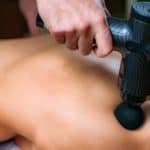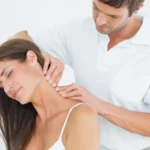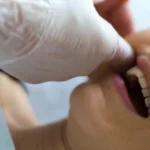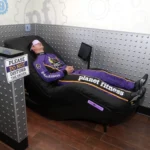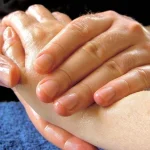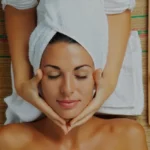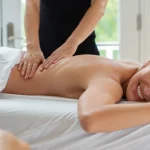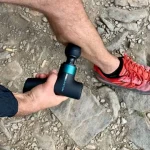Do you have knots in your muscles that just won’t seem to go away? Are you wondering what kind of massage is best for knots? If so, you’re not alone. Many people suffer from knots in their muscles, and massage can be an effective way to relieve them. In this article, we’ll discuss the different types of massage that can help to relieve knots, as well as how to choose the right massage for your needs. Read on to learn more about what kind of massage is best for knots.
Types of Massage

Swedish Massage
Swedish Massage is a classic massage technique that promotes relaxation and well-being. It helps to reduce muscular tension, improve circulation and increase flexibility. It is the perfect massage for releasing knots and easing stress.
Deep Tissue Massage
Deep Tissue Massage is a more intense massage that focuses on the deeper layers of the muscles and connective tissue. It releases chronic tension and knots, and can help to reduce inflammation. This type of massage is great for releasing tension and improving mobility.
Trigger Point Massage
Trigger Point Massage is a focused massage technique that targets trigger points (knots) in the body that can cause pain and discomfort. It helps to release the knots, ease tension and improve range of motion.
Acupressure Massage
Acupressure Massage is a traditional Chinese massage technique that uses finger pressure to stimulate specific points in the body. It helps to release knots, improve circulation and reduce stress.
Hot Stone Massage
Hot Stone Massage is a relaxing massage that uses heated stones to help relax tight muscles, release knots and reduce tension. This type of massage is perfect for relieving stress and improving overall wellbeing.
If you have knots that need to be released, there are many types of massage that can help. Whether it’s Swedish Massage, Deep Tissue Massage, Trigger Point Massage, Acupressure Massage or Hot Stone Massage, there is a massage that can help you to feel better. To determine what type of massage is best for knots, it is important to talk to your doctor or massage therapist.
Benefits of Massage for Knots
Improved Circulation: Massage helps to improve circulation and brings more oxygen-rich blood to the affected area. This helps to reduce the pain and swelling associated with knots.
Reduced Stress: Massage helps to reduce stress and tension, which can be a major factor in the development of knots. This can help to reduce the risk of developing knots in the future.
Increased Range of Motion: Massage helps to increase flexibility and range of motion, which can help to reduce the risk of developing knots.
Pain Relief: Massage helps to reduce pain and inflammation associated with knots. This can help to reduce the discomfort associated with knots and make them easier to manage.
Enhanced Relaxation: Massage can help to promote relaxation and reduce muscle tension. This can help to reduce the risk of developing knots in the future.
Techniques Used in Massage for Knots
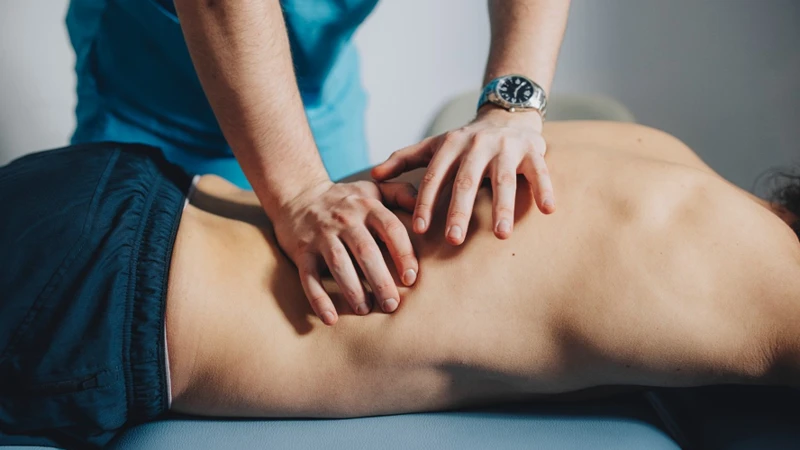
- Effleurage: This is a light, sweeping massage that helps to relax the muscle and release tension.
- Petrissage: This technique is used to knead the muscles, helping to break up knots and stimulate circulation.
- Friction: This technique is used to target specific areas of muscle tension. Pressure is applied to the knots in circular motions to relieve tension.
- Trigger Point Therapy: This technique focuses on pinpointing and releasing tender knots in the muscle. Pressure is applied to the area for several seconds, then released.
- Shiatsu: This is a type of Japanese massage that uses pressure points to release knots and help restore balance to the body.
- Myofascial Release: This technique uses sustained pressure to stretch the fascia, which helps to release tight muscles and break up knots.
- Swedish Massage: This type of massage is used to relax the entire body. It can help to release knots and tension, as well as improve overall circulation.
Other Factors to Consider When Choosing Massage for Knots
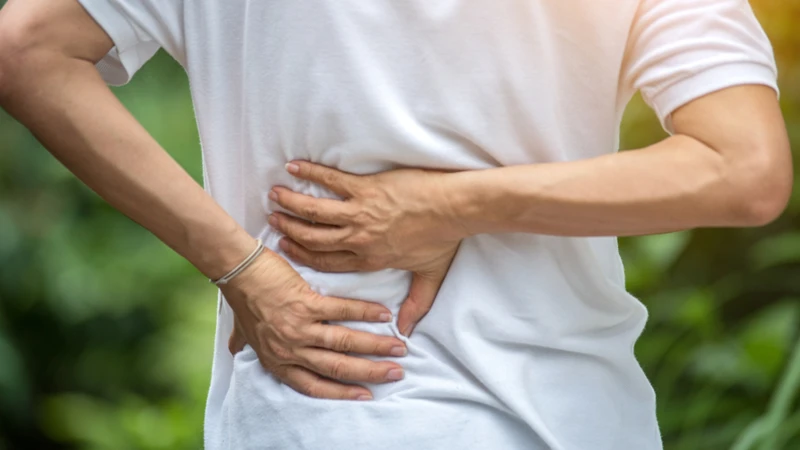
Type of massage: Depending on the severity of the knots, one type of massage might be more suitable than another. For example, deep tissue massage is better suited for knots in the back and shoulders while Swedish massage is better suited for knots in the arms and legs.
Location: Where the massage is taking place can also be a factor when it comes to knots. If a knot is located in a hard-to-reach area, like the lower back, then a massage therapist might recommend going to a massage parlor or spa for a full-body massage.
Cost: The cost of a massage is also an important factor to consider when choosing the right massage for knots. Depending on the type of massage and the location, the cost can vary significantly. It is important to compare prices to get the best deal.
Experience: It is also important to consider the experience of the massage therapist. A good massage therapist will be able to identify the source of the knots and the best way to treat them. It is best to ask for recommendations or research the massage therapist’s credentials before booking a session.
Self-Massage Techniques for Knots
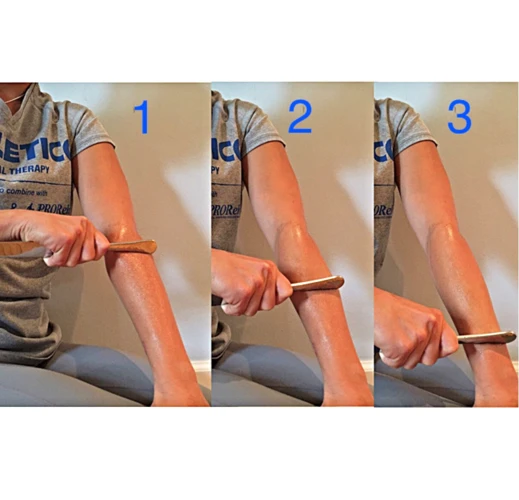
1. Myofascial Release: Myofascial release is a type of massage that focuses on releasing tightness and tension in the muscle fascia. To do this, use your hands to apply sustained pressure to the area of the knot for 30-60 seconds. You can also use a foam roller or a massage ball to get deeper into the muscle tissue.
2. Trigger Point Release: This technique is used to find tight knots in the muscle and then apply pressure to the affected area for 30-60 seconds. You can use your thumbs, fingers, or knuckles to massage the area and release the tension.
3. Deep Tissue Massage: This technique can help release stubborn knots that are deep in the muscle tissue. To do this, use firm pressure and circular movements to massage the area. You can use your hands, knuckles, or even a massage ball to massage the area. Be sure to listen to your body and stop if you feel any pain.
4. Cross-Fiber Friction: This technique is used to break up the adhesions in the muscle tissue. To do this, use your fingers to massage the area in small circular movements. You can also use a foam roller or a massage ball to get deeper into the muscle tissue.
5. Stretching: Stretching is an important part of relieving knots. To do this, gently stretch the affected area until you feel a mild tension. Hold the stretch for 20-30 seconds and then release. Do this a few times to help release the tension in the muscle.
Safety Considerations when Getting a Massage for Knots
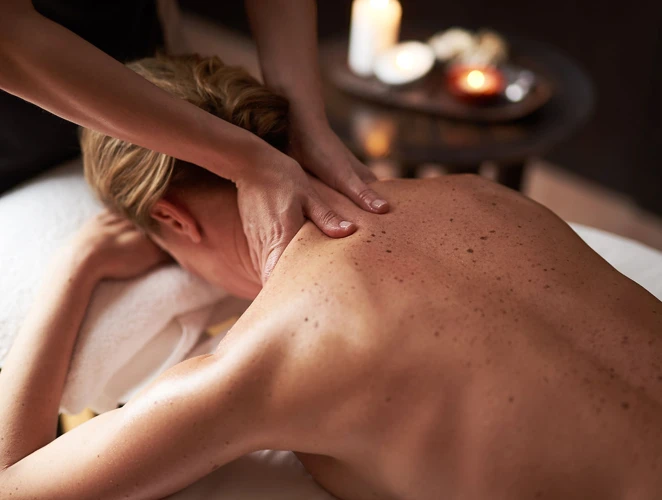
Communicate with the Therapist: Before starting your massage, be sure to communicate with the therapist about your needs and preferences. Let them know if you have any allergies, health conditions, or areas of discomfort that you would like them to be aware of.
Warm up: Before starting your massage, you should stretch and warm up your muscles to prevent any further pain or discomfort.
Choose the Right Pressure: During the massage, it is important to choose the right amount of pressure. If the pressure is too light, it may not be effective in relieving the knots. However, if the pressure is too strong, it may cause further pain and discomfort.
Stay Hydrated: It is important to stay hydrated during a massage to help reduce any muscle soreness or pain. Make sure to drink plenty of water before and after the massage.
Take Breaks: If you start to feel any pain or discomfort during the massage, it is important to take a break. This will help your body relax and recover.
Follow Up Care: After the massage, it is important to follow up with your therapist and ensure that you are taking the necessary precautions to prevent any further knots from forming. This may include additional stretching and massage techniques.
Cost of Massage for Knots
- Massage therapy can be a great way to relieve pain and tension, but the cost of massage for knots can vary greatly depending on the type of massage you need and the length of the session.
- Swedish massage is the most common type of massage for knots and it’s usually the least expensive option. A 60-minute session typically costs between $50 and $90.
- Deep tissue massage is more intense than Swedish massage and is often used to target specific areas of tension. The cost of a deep tissue massage for knots is usually higher, typically between $70 and $120.
- Trigger point massage is a more targeted type of massage that is used to release knots and tension in specific areas of the body. The cost of a trigger point massage for knots is usually higher than Swedish or deep tissue and can range from $85 to $150.
- Sports massage is designed for athletes and can help reduce muscle soreness and improve performance. The cost of a sports massage for knots is usually higher than Swedish or deep tissue, ranging from $90 to $200.
Frequently Asked Questions
What Type of Massage is Best for Relieving Tension in Knots?
Deep tissue massage is the most effective type of massage for relieving tension in knots. This type of massage uses slow, firm strokes to target the deeper layers of muscle and connective tissue. It also helps increase blood circulation and reduce inflammation, both of which can help alleviate tightness and pain from knots. Other massage techniques such as Swedish massage, trigger point therapy and myofascial release can all be beneficial in relieving tension in knots as well.
What are the Benefits of Massage for Knots?
Massage can be beneficial for relieving muscular tension, knots, and pain. It helps to reduce inflammation, improve circulation, and restore range of motion. Massage can also help to reduce stress levels and boost relaxation. Additionally, massage can improve posture, reduce muscle spasms, and improve flexibility. It can also help to break up adhesions and scar tissue in the muscle, reducing pain and restoring proper movement.
How Often Should I Get a Massage for My Knots?
The frequency of massages depends on the severity and type of knots. Minor knots may require one massage session every week or two, while more serious knots may need up to three massage sessions per week. However, it is always recommended to start off with weekly sessions, and then progress as needed.
Is there any special type of massage for knots?
Yes, there is a special type of massage for knots. Here are the different types of massage for knots:
- Sports Massage – This type of massage is designed to target knots in the body that have been caused by physical activity. Sports massage can help ease tension in the muscles and reduce the risk of injury.
- Trigger Point Massage – This type of massage is used to target knots in the muscles that are caused by tension and stress. With this type of massage, the therapist will use their hands to apply pressure to the area that is affected.
- Myofascial Release – This type of massage is designed to target the fascia, which is the connective tissue that surrounds the muscles. Myofascial release helps to reduce knots in the body by releasing the tension in the fascia.
- Deep Tissue Massage – This type of massage is designed to target knots that are deep within the muscle tissue. With this type of massage, the therapist will use their hands to apply pressure to the area that is affected.
The type of massage that is best for knots will depend on the type of knot and the cause of the knot. A massage therapist can help determine which type of massage is best for the specific knot.
Is Massage Therapy Safe for Knots?
Yes, massage therapy is safe and effective for knots. It is an effective way to reduce muscle tension and improve overall health.
- Massage therapy helps to relax the muscles, improve circulation, and reduce pain.
- It is a natural way to reduce swelling and stiffness in the joints.
- It helps reduce muscle tension and improve range of motion.
- It can be used as a preventative measure to help prevent knots from forming.
- It can also be used to break up existing knots and improve muscle flexibility.
- It can help reduce stress, which can lead to fewer knots.
However, it is important to seek professional advice from a licensed massage therapist before beginning a massage therapy regimen. Massage therapy is not recommended for everyone, especially those with certain medical conditions or who are pregnant.
Conclusion
A massage is a great way to relax and relieve muscle pain and tension. Different massage techniques can be used to address different kinds of knots, so it is important to know what kind of knots you have before selecting a massage therapy. The best way to determine the type of knots is by consulting with a massage therapist. They can assess the tightness and tenderness of the knots and suggest the most effective massage techniques to alleviate the tension and improve your overall wellbeing.


